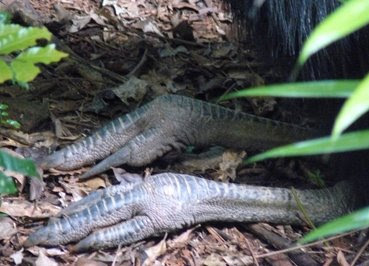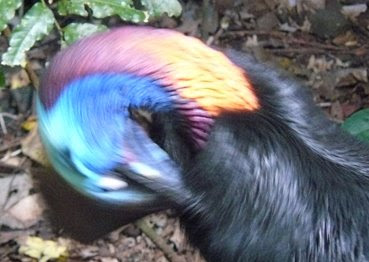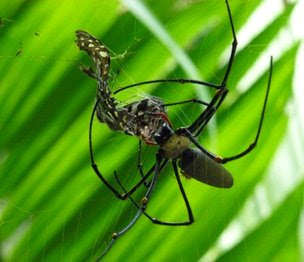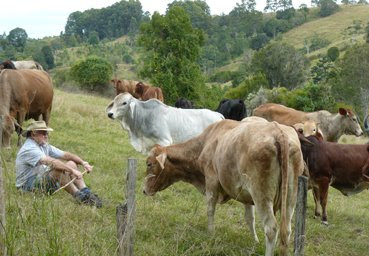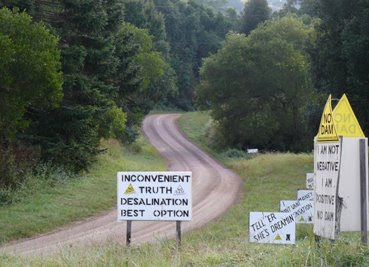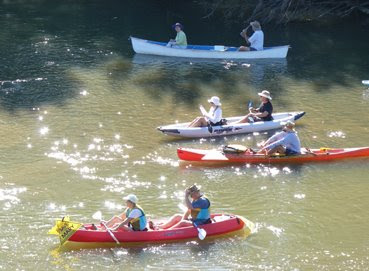I have come here to fall in love
with the forest, to live intimately in its embrace
to let every cell of my body be infused
with its essence. I give up
my southern/city tainted blood
to the leeches and sandflies,
wanting my veins to run with Daintree sap.
What does it mean to let myself be infused with the essence of Daintree? It seems to mean allowing many of my attachments to fall away and genuinely relaxing into having all my attention on being here, right now. Consider the mundane aspects of everyday life in the rainforest:
At first not 'being in contact' with family and friends, with the outside world, via cellphone (no coverage), landline or email (unreliable access), or snail mail (uncertainty about what address to use)was challenging, but now I can barely rouse myself to pursue the necessary communications that are possible.
More recently I still thought I needed to have 'my own space' that was private and comfortable but instead I have chosen to stay where I sleep in an office/laundry room which is two flights of stairs, two rooms and a veranda away from the bathroom. My priorities for creating a sense of (temporary home) have been turned upside-down and now it's the qualities which connect me to the wilderness, rather than those which separate me, which matter most.
Coming here to wwoof and without my own vehicle meant abandoning most illusions of control over my future activities and allowing events to unfold at least partly in the hands of my hosts and other people around me. My current challenge is letting go of my 'need' for a shopping trip to a real town (Mossman, Port Douglas or Cairns, I don't really mind) to replenish some personal supplies. The list keeps growing, and I keep missing out on appropriate rides with acquaintances, yet I don't feel desperate enough to make a concerted effort (eg pay the ridiculous bus fare). The local shop is having an outrageous sale on Cadbury chocolate bars which is apparently more than enough retail therapy for me right now! Come to think of it, perhaps my easy-going state is because my veins are running with Dairy Milk.
I am surrounded by people who constantly have lessons in non-attachment forced on them by the rainforest. Clothes, furniture and books all rot quickly in the pervasive damp. Anything electrical can only have a short life of erratic efficiency caused by unreliable solar or generator power, persistent wildlife of all denominations and of course the inescapable moisture. Vehicles break down, gardens are overgrown/eaten/diseased, buildings are encroached to near-disintegration, creeks rise and cut off the only access road, (and to the North the roads are 4WD only anyway). And there is little money to made here yet the cost of living is high and rapidly increasing due to our inherent dependence on petroleum for generating electricity and for transporting in food and every other consumable.
Cape Tribulation is a small, friendly town that is proving easy to feel accepted in. Like many communities that survive in adverse conditions people are kind and generous. Yesterday was my host, Rob's, birthday and a local nightspot put on a Thai-themed party night for him. Almost everyone in the area seemed to be there, including little children and wild men down from the hills. Rob was shouted beers until they ran out and after dinner an enormous chocolate cake appeared from the kitchen on fire with sparklers.
Most people who live here have a 'Cape Trapped' story that begins with a short touristy visit that became a permanent residence. It gets in your blood, this place, and its hard to regret the way it transforms us.


